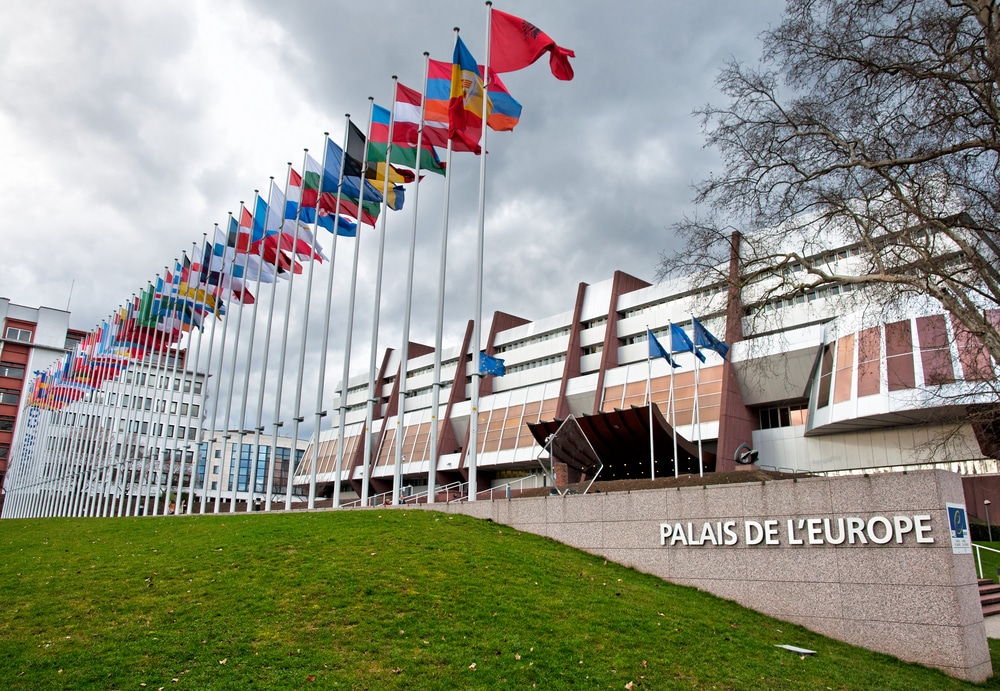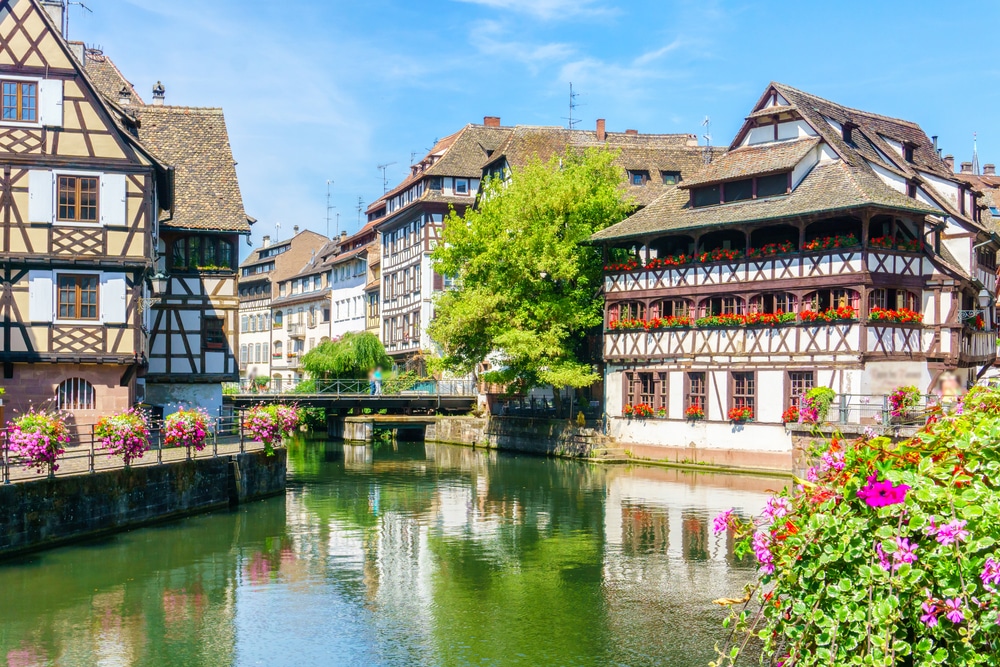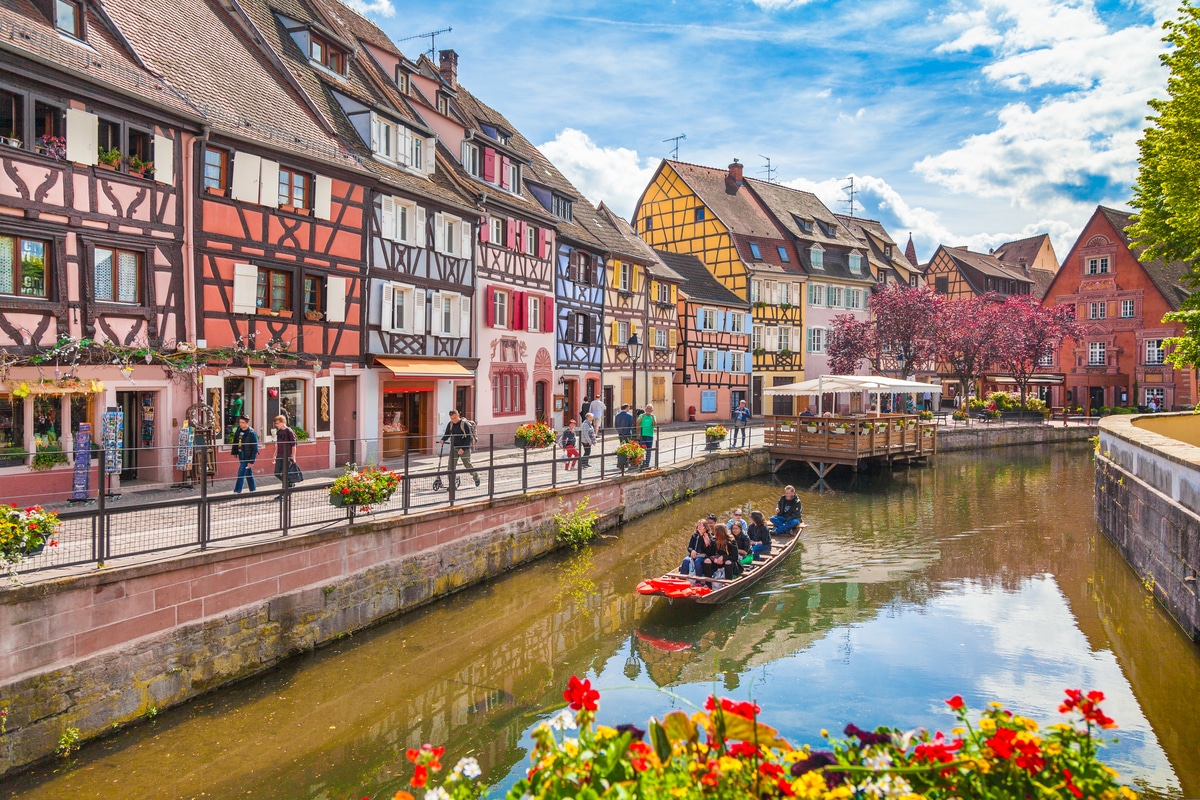- Home ›
- France ›
- Strasbourg
The Council of Europe in Strasbourg

On 28 January 1977, the time had finally come. The Council of Europe, Europe's oldest political institution, got its own building. The first meetings of the Council of Europe in the years before 1950 were held in the former Kaiser Wilhelm University, a building dating from 1880. In the years between 1950 and 1977, the plenary sessions were held in a simple, functional building that stood on the spot where the lawn in front of the Palace of Europe is today. In the past - since the 1930s - there were tennis courts here, which were also used as an ice rink in winter. The laying of the foundation stone for the Palace of Europe took place on 15 May 1972, the Swiss politician Pierre Graber performed it. The design was by the French architect Henry Bernard.
The architecture
The building has a ground plan of a square with a side length of 106 meters. The height of the building is 38 meters, and there is a total of 64,000 square meters of space. There are 17 meeting rooms of various sizes and about a thousand offices for the more than 2,000 staff members of the Council of Europe. The façade is characterised by the colours red, silver and golden brown, coated in aluminium and marked by supporting pillars. The plenary hall in the centre of the building bears a transparent dome resembling a giant seashell. In the entrance hall, an imposing staircase leads up. In front of the main entrance, the flags of the 47 member states line the square.
The surroundings
Opposite the main entrance to the Palace of Europe is the spacious Parc de l'Orangerie with its extensive lawns, trees and flowerbeds. This is where Council of Europe staff like to relax during their lunch break - or dine at Eric Westermann's Buerehiesel restaurant, a culinary highlight of Strasbourg. It offers business menus and serves selected delicacies and specialities. If you prefer something less exclusive, you can also eat at the bowling centre - or get something sweet from the ice cream parlour. On the squares around the Council of Europe building you will find - besides green spaces and meadows - some works of art worth seeing.
around the european palace
In front of the big main staircase leading to the entrance of the Palace of Europe, there is the memorial stone "Aux victimes de la faim". It is made of white marble and was donated to the Council of Europe by ATD Fourth World, an NGO. The stone is intended to commemorate the fight against poverty and the goal of social justice in Europe.
The Auschwitz Memorial Stone at the bottom of the main staircase has commemorated Holocaust Memorial Day since its inauguration in 2005. A bronze statue, in turn, stands at the end of the forecourt. Designed by the Luxembourg artist Lucien Wertwollier, it was presented to the Council of Europe in 1977. The name "Interpenetration" refers to the tension resulting from the balancing of an equilibrium.
The bronze sculpture "Human Rights" was created by the sculptor Mariano González Beltrán and shows female and male figures joined in a circle. The gift from Spain symbolizes the work of the Council of Europe.
The sculpture "Europe", created by the Austrian sculptor, is made of electrolyzed copper and was given to the Council of Europe in 1985. Italy, in turn, donated the two-metre-high "Four-Leaf Clover", made of chrome and created by the Italian Attilio Pierelli, to the institution in 1977.
There are other sculptures in the vicinity, so it's worth taking a tour.



